 An impatient shuttle driver rushed a turn through a crosswalk and pinned a man for twenty minutes, according to ABC Local News. The accident, which occurred on February 15, 2012, was captured by surveillance video set up at Empire Market in the Tenderloin District and showed the pedestrian had the right of way.
An impatient shuttle driver rushed a turn through a crosswalk and pinned a man for twenty minutes, according to ABC Local News. The accident, which occurred on February 15, 2012, was captured by surveillance video set up at Empire Market in the Tenderloin District and showed the pedestrian had the right of way.
The driver of the Paratransit shuttle stayed on the scene and was cooperative with police. Police officers determined that the incident was an unfortunate traffic incident and no charges will be brought against the driver, who was shuttling a van load of disabled passengers.
Injured parties, such as the victim of this accident who was trapped for twenty long minutes under the shuttle and suffered multiple broken bones, may feel that it is unfair if no charges are brought against the person who caused their injuries.
Persons injured in an accident should remember that the court system has two tracks: one for criminal actions and one for civil actions. Every criminal action is brought by the state or federal government on behalf of its residents. Convicted defendants are punished with jail time, fines, and other penalties in order to achieve justice and deter the convict and others from committing future crimes.
The District Attorney may not pursue a criminal action against someone who, for instance, causes personal injury or property damage for a variety of reasons. In this case, it is possible that the driver mitigated the situation because, although he made a mistake, he stayed at the scene and cooperated fully with the police investigation of the collision. Before bringing a criminal action, the District Attorney weighs the costs of a potential criminal suit with the necessity to serve justice and the public good.
Whether or not a defendant is convicted in criminal court, the victim does not receive any compensation for pain and suffering or the expenses brought on by the incident. The remedies provided in criminal and civil court serve different purposes. The criminal court provides a castigatory remedy against defendants which are found guilty. The civil courts provide a forum for victims themselves to protect their private rights and property. Individuals, entities, and the government alike may bring a civil suit against the defendant to seek a remedy, usually money damages.
The burden of proof required to find against a defendant is also different in criminal actions from civil actions. In criminal actions, because the defendant is often being deprived of their Constitutional right to liberty, the defendant must be found guilty beyond a reasonable doubt. However, in a civil action in order to make a viable claim against the defendant a plaintiff must only prove by the preponderance of the evidence that the defendant caused the plaintiff damage. In other words, the plaintiff must only tip the scales of justice in their favor to recover in a civil action. Nevertheless, the burden of proof is a key element in both civil and criminal actions. As soon as an incident occurs, the injured party should keep evidence in mind and immediately start to gather and preserve proof of any possible claims.
For example, if the pedestrian in this case were to gather proof for a civil action, he should immediately request the police report for the incident, the surveillance video which captured the accident, his medical records describing his injuries and the progress of his recovery, and records from any jobs showing past wages lost as a result of his injuries.
Injured parties should remember that just because a criminal action was not brought against the party which caused them damage does not mean that an injured party should not bring a civil action. Furthermore, even if a criminal action is brought against the other party, they will not receive any compensation unless they file and prevail in a civil action.
Continue Reading ›
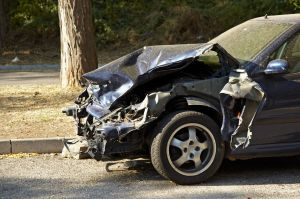 Our San Francisco car crash lawyer sees the victims of careless driving all too often. Driving is a serious responsibility but too many people take it too lightly and treat cars as toys rather than respecting the powerful and potentially dangerous force of a car.
Our San Francisco car crash lawyer sees the victims of careless driving all too often. Driving is a serious responsibility but too many people take it too lightly and treat cars as toys rather than respecting the powerful and potentially dangerous force of a car. San Francisco Injury Lawyer Blog
San Francisco Injury Lawyer Blog


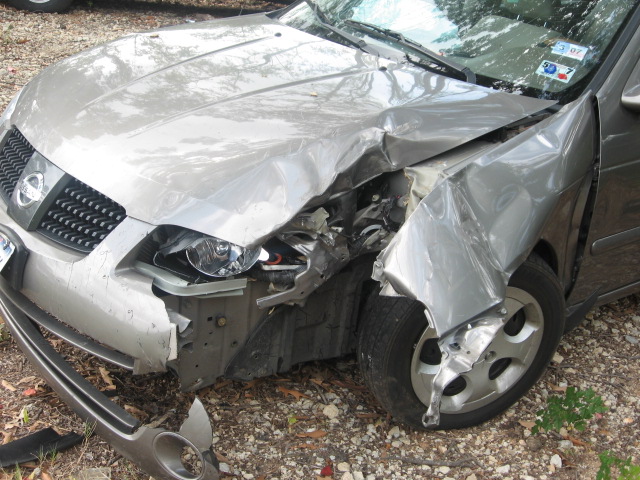
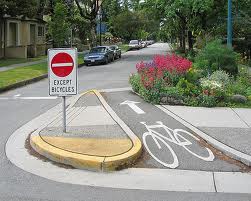 In 2000, Mayor Willie Brown, Jr. implemented the San Francisco Municipal and Transit Agency (SFMTA)
In 2000, Mayor Willie Brown, Jr. implemented the San Francisco Municipal and Transit Agency (SFMTA)  An impatient shuttle driver rushed a turn through a crosswalk and pinned a man for twenty minutes, according to
An impatient shuttle driver rushed a turn through a crosswalk and pinned a man for twenty minutes, according to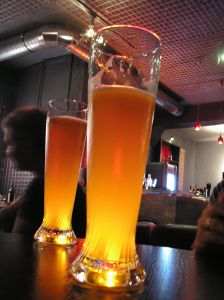 The San Francisco Chronicle reported on Saturday that three police officers have been arrested in the past month on suspicion of driving under the influence of alcohol. The latest arrest involved Officer Michael Wars, the head of the Union City Police Officers Association and a twenty-two year veteran of the Union City police department. Ward, age forty-three was pulled over by California Highway Patrol just after midnight on February 8. He was driving in Pleasonton on Bernal Avenue and was operating a hand-held mobile phone when he was pulled over. The Highway Patrol officer determined that Ward had been drinking and arrested him on suspicion of a misdemeanor DUI charge.
The San Francisco Chronicle reported on Saturday that three police officers have been arrested in the past month on suspicion of driving under the influence of alcohol. The latest arrest involved Officer Michael Wars, the head of the Union City Police Officers Association and a twenty-two year veteran of the Union City police department. Ward, age forty-three was pulled over by California Highway Patrol just after midnight on February 8. He was driving in Pleasonton on Bernal Avenue and was operating a hand-held mobile phone when he was pulled over. The Highway Patrol officer determined that Ward had been drinking and arrested him on suspicion of a misdemeanor DUI charge. 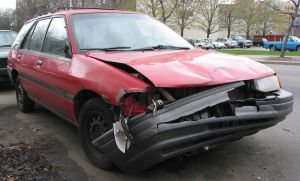 Alcohol is dangerous primarily because it limits reaction times, resulting in drivers who are unable to respond to ever-changing road conditions. In contrast, the primary danger of mixing marijuana and driving lies in the drug’ impact on spatial recognition. These limitations can lead a driver to follow too closely or to weave in and out of traffic lanes. Many users do not realize that their spatial ability is limited and may feel overly confident in their ability to drive after using marijuana. The impact also varies significantly from person to person based on differences in how cannabis is metabolized. In general, the active impact of marijuana lasts three to four hours.
Alcohol is dangerous primarily because it limits reaction times, resulting in drivers who are unable to respond to ever-changing road conditions. In contrast, the primary danger of mixing marijuana and driving lies in the drug’ impact on spatial recognition. These limitations can lead a driver to follow too closely or to weave in and out of traffic lanes. Many users do not realize that their spatial ability is limited and may feel overly confident in their ability to drive after using marijuana. The impact also varies significantly from person to person based on differences in how cannabis is metabolized. In general, the active impact of marijuana lasts three to four hours.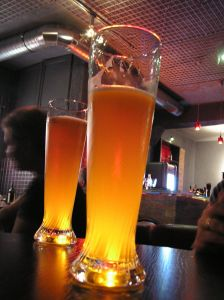 The San Francisco Chronicle reported on an alcohol-involved fatality this week near Sacramento. Forty-one year old Christopher Rigsby was driving the wrong way, travelling east in the westbound lanes of Highway 50 near Folsom Boulevard in Gold River when his Honda CR-V collided with a Pontiac Aztec. The impact of the collision caused the Pontiac to flip and killed three of the vehicle’s five occupants, including two who were thrown from the car. The Pontiac’s driver, Gustavo Sandoval-Gonzalez, age thirty-one of Sacramento was taken to UC David Medical Center due to chest pain and injuries to his hand and knee. The three deceased victims were a man and two women in their fifties whose names had not been released at the time of the Chronicle’s report. A fifth passenger in the Pontiac, fifty-nine year old Pedro Cornejo, suffered major internal injuries and was taken to Mercy San Juan Medical Center for care.
The San Francisco Chronicle reported on an alcohol-involved fatality this week near Sacramento. Forty-one year old Christopher Rigsby was driving the wrong way, travelling east in the westbound lanes of Highway 50 near Folsom Boulevard in Gold River when his Honda CR-V collided with a Pontiac Aztec. The impact of the collision caused the Pontiac to flip and killed three of the vehicle’s five occupants, including two who were thrown from the car. The Pontiac’s driver, Gustavo Sandoval-Gonzalez, age thirty-one of Sacramento was taken to UC David Medical Center due to chest pain and injuries to his hand and knee. The three deceased victims were a man and two women in their fifties whose names had not been released at the time of the Chronicle’s report. A fifth passenger in the Pontiac, fifty-nine year old Pedro Cornejo, suffered major internal injuries and was taken to Mercy San Juan Medical Center for care. 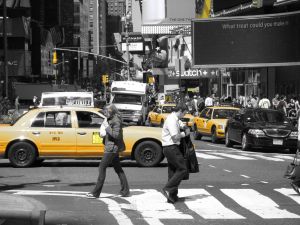 Most drivers instinctively improve their driving habits when passing police stations. Not so with one taxi driver, who cut off a bus while trying to make a right turn on Thursday, January 26. The Yellow Cab driver pulled the aggressive maneuver right outside the Bryant Street Police Department and the Hall of Justice, which houses the Traffic Division of the San Francisco Superior Court.
Most drivers instinctively improve their driving habits when passing police stations. Not so with one taxi driver, who cut off a bus while trying to make a right turn on Thursday, January 26. The Yellow Cab driver pulled the aggressive maneuver right outside the Bryant Street Police Department and the Hall of Justice, which houses the Traffic Division of the San Francisco Superior Court.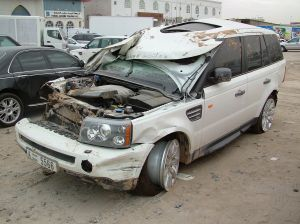 Road rage made headlines again this week. In the early morning hours of Wednesday, January 25, a minivan and a truck collided on Interstate 80 in Richmond. The minivan, a Ford Aerostar, was driven by Ronald Zerangue who was travelling west on I-80 in the vicinity of Carlson Boulevard. The van struck a GMC pickup truck travelling in the carpool lane before crashing into the center divider and flipping repeatedly. Zerangue, 63 of El Sobrante, died at the scene of the crash. The unidentified driver of the pickup and his passenger only suffered minor injuries.
Road rage made headlines again this week. In the early morning hours of Wednesday, January 25, a minivan and a truck collided on Interstate 80 in Richmond. The minivan, a Ford Aerostar, was driven by Ronald Zerangue who was travelling west on I-80 in the vicinity of Carlson Boulevard. The van struck a GMC pickup truck travelling in the carpool lane before crashing into the center divider and flipping repeatedly. Zerangue, 63 of El Sobrante, died at the scene of the crash. The unidentified driver of the pickup and his passenger only suffered minor injuries. 